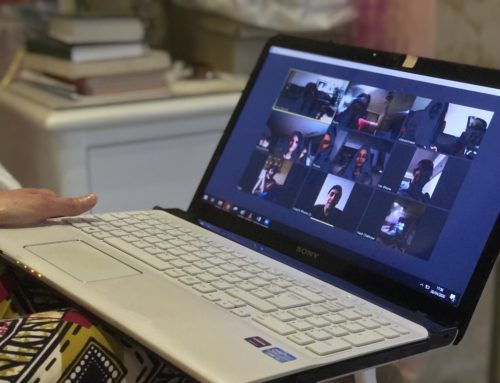
Volunteers can often be great spokespeople for nonprofits that are looking to tell their stories in the media. (Creative Commons photo courtesy of DC Central Kitchen).
Nonprofits face an uphill battle when they pitch stories to the media.
Today’s reporters get bombarded by a constant array of pitches from organizations that are competing for their limited attention and time. Many of these pitches are legitimately interesting — but these reporters only have the time and space to cover a fraction of those stories.
However, there’s a secret ingredient that can help give your pitch an edge: real people.
While it’s tempting — and easy — to position your executive director or spokesperson as the ultimate voice in your pitch or news release, journalists know that the best stories are told not by figureheads, but by the people who most easily identify with their readers or viewers.
After all, most people in their audience aren’t nonprofit executives. But they can quickly see themselves in a story about someone who could easily be their next-door neighbor or a classmate of one of their children.
And here’s the thing — reporters often struggle to find these real voices when they’re gathering information for stories.
It’s not hard for a reporter to pick up the phone and talk to a spokesperson or executive. But it’s often difficult to quickly find people who are willing to talk about their struggle to make ends meet or why they are giving less money to charity this year.
If you can solve that problem for them in advance and identify a real person or two who is willing and able to be interviewed in your pitch, you dramatically increase your odds of getting your story covered.
As a result, before you send an email to a journalist or draft a press release, take a little extra time beforehand to see if you can find a person beyond an executive or spokesperson who is willing to be interviewed for the story you’re trying to pitch.
Depending on the type of story you’re pitching, these real people are likely to fall into one of these categories:
The People You Serve — If you’re looking to raise awareness about a key issue or get attention for a program at your organization, consider finding someone who is touched by your work who is comfortable talking about their experience. If you’re a nonprofit that specializes in education, it might be a parent or family that can talk about the issue. If you are working to expand accessibility to affordable health care, it might be a person who has struggled to pay for a treatment. This can help put a human face on the story you’re trying to tell. It’s not always easy to find people who are willing to share such stories — but chances are your nonprofit has helped someone who is both grateful for your support and passionate about the cause.
Donors — Donors are among the most elusive of sources — often because they are often modest about their charitable work. When I was an editor and reporter at The Chronicle of Philanthropy, we were often looking for donors to shed insights about why they give and how nonprofits can be more effective in earning their support. Donors can also provide perspectives about your programs and impact. If you have a passionate donor or two who is willing to go on the record with reporters, you have an opportunity to jump to the head of the line with your pitch and when they are reaching out to potential sources for assigned stories.
Volunteers — Your volunteers can often provide passionate accounts of why your cause or issue is important — and many volunteers give their time because they have a strong connection to your work. As a result, it might be helpful to have some volunteers in your stable who are willing to do interviews.
Front-Line Staff — Your top executives aren’t the only ones who are experts about your work and your cause. Your organization likely employs a number of staff members who have rich expertise and can provide anecdotes and examples that can help audiences understand complex issues and see the impact of your work.
It’s important to note that it’s much easier to identify and find potential sources within your organization if you’re not doing it on a tight deadline. When we work with nonprofit and foundation clients, we often try to identify and coach potential sources as part of our day-to-day work.
One way to do that is to ask those you’re profiling in your newsletter, annual report and other content whether they’d be willing to talk to outside media in the future.
If you take the time now to identify willing sources and build a roster of folks who can serve as spokespeople for your organization, you’ll be well armed when the time comes to pitch your next story or field a media call.





